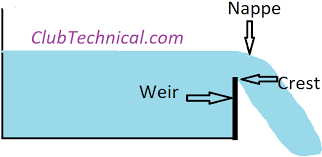Dam Safety And Earthquakes
Earthquakes have always been a significant aspect of the design and safety of dams.
A large storage dam consists of a concrete or fill dam with a height exceeding 15m, a grout curtain or cut-off to minimise leakage of water through the dam foundation, a spillway for the safe release of floods, a bottom outlet for lowering the reservoir in emergencies, and a water intake structure to take the water from the reservoir for commercial use.
During the Richter magnitude 8 Wenchuan earthquake of 12 May 2008, 1803 concrete and embankment dams and reservoirs and 403 hydropower plants were damaged. Likewise, during the 27 February 2010 Maule earthquake in Chile of Richter magnitude 8.8, several dams were damaged. However, no large dams failed due to either of these two very large earthquakes.
Under normal conditions buildings and bridges have to carry mainly vertical loads due to the dead load of the structures and some secondary live loads. In the case of dams the main load is the water load, which in the case of concrete dams with a vertical upstream face acts in the horizontal direction. In the case of embankment dams the water load acts normal to the impervious core or the upstream facing. Earthquake damage of buildings and bridges is mainly due to the horizontal earthquake component. Concrete and embankment dams are much better suited to carry horizontal loads than buildings and bridges.
Moreover, most of the existing buildings and bridges have not been designed against earthquakes using modern concepts, whereas dams have been designed to resist against earthquakes since the 1930s.
Seismic hazard is a multi-hazard
Ground shaking causes vibrations and structural distortions in dams.
Fault movements in the dam foundation or discontinuities in dam foundation near major faults can be activated, causing structural distortions.
Fault displacement in the reservoir bottom may cause water waves in the reservoir.
Mass movements into the reservoir may cause impulse waves in the reservoir.
Ground movements and settlements due to liquefaction, densification of soil and rockfill, causing distortions in dams.
Abutment movements causing sliding of and distortions in the dam.
Lowering of a reservoir would have to happen by low level outlets (bottom outlets) or the power waterways if the intake is at low elevation.
As a conclusion, earthquake prediction, which is a slowly developing science, is not a viable option to improve the earthquake safety of dams. The only real option is to have a dam which can withstand the strongest earthquake effects to be expected at the dam site. This is the current practice in dam design.

.jpeg)



Fine
ReplyDelete